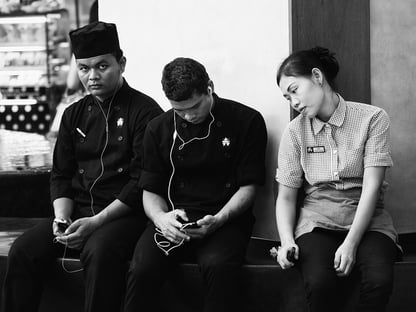Pick a restaurant or retail behemoth – McDonalds, Walmart, whichever you like.
Who’s the most important person in the organization?
The CEO? Founder? Marketing guru?
The answer, to a customer, is the employee standing in front of them at this moment.
They’re the frontline of a restaurant or retail operation, yet they earn low wages and are often stuck with long, difficult shifts. When they’re "actively disengaged", they can cost a storefront thousands, if not more.
Yet most of the time, they’re treated like a commodity. And customers usually recognize it, to the detriment of the entire organization.
Employee Engagement Equals Customer Engagement
Whole Foods, Starbucks, Costco, REI - all enjoy high customer engagement, which correlates with employee engagement. None of those companies are the most innovative in their industries, nor are they the cheapest option. They’re great to their employees, which makes for a great in-store experience and consistent quality across locations.
According to one recent study, it costs $3,328 to replace a $10/hour retail employee. Yet some would argue that high turnover is important to control costs.
The turnover model may work for some, but it contributes to a lesser customer experience. One bad experience can cost you a potential lifetime advocate. With social media, that bad experience can also quickly reverberate to thousands of potential customers.
Six Principles to Acquire, Engage and Retain Great Employees
Many of these issues could be solved by investing in employee retention and development.
Here’s a few ideas, some borrowed from those high-performing companies, to keep frontline employees around:
- Fair pay, fair benefits. There's not an easy way around this one. Salary and benefits matter to just about everyone. (For statistical evidence, check out our employee engagement statistics page.) In general, people are coming to work to earn money. They're working to live, and want rewards for spending their lives with a company. It's possible to make up for salary deficits with employee perks.
- Give them opportunities to move up. Every employee that walks into your company should have an opportunity to become CEO. Sound ridiculous? It shouldn't. Providing opportunities for a long-term career will help employees feel valued, and motivate them to put forth a good effort regardless of how menial their role seems.

- Emphasize their role. Everyone wants to feel important, even the person scrubbing toilets. Details matter to customers, which means every employee matters. Emphasize to employees how their role helps the company succeed. Reward them for doing it well.
- Invest in training. Training is expensive, yes. But so is customer churn. Train employees to do their jobs, but also how to interact with customers and coworkers. The more ownership employees have of their role, the more they'll grow within it.
- Invest in smart hiring. Restaurants and retail are all about relationships. Yes, a half hour customer-employee interaction constitutes a relationship. It's important to bring in people with a service mindset, who get along with others naturally. The right people make the biggest difference in prolonging those relationships. This point isn't only for entry-level employees. In retail and restaurant operations, the adage about "employees quit managers, not companies" is spot on. Employee churn is as much about the person in charge as any other factor.
- Adjust! Be open to feedback (and criticism). Millennials in particular have shown a desire to be heard. This doesn't mean changing an operation based on every suggestion. It means some valuable changes, as well as some teaching moments.
Iconic Companies Begin with Great People
Will these ideas guarantee every employee gets invested in the company and customer service? Nothing will do that. But creating a rewarding, personable working environment will attract and keep better employees, who in general will provide better service to customers.
Those customers become further engaged and share with their friends, who also become engaged. Employees stay, move up through the organization and strengthen the culture.
They hire more great employees like themselves, and the cycle continues.
This is how great organizations become beloved icons.
And it all starts by investing in employees.
(server image courtesy of chrisada)






